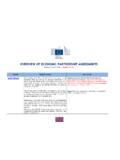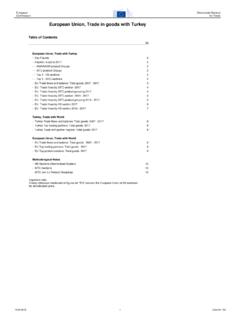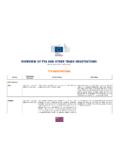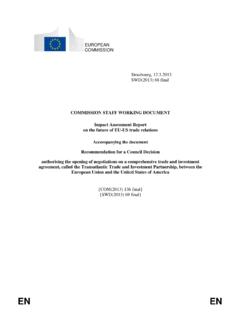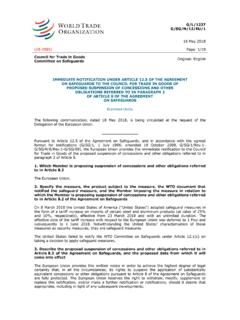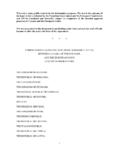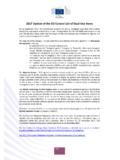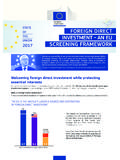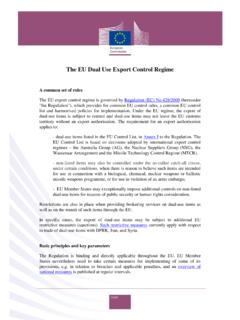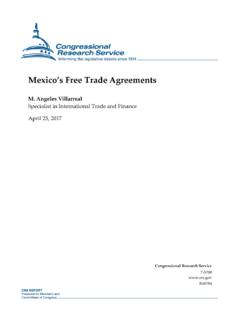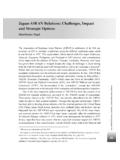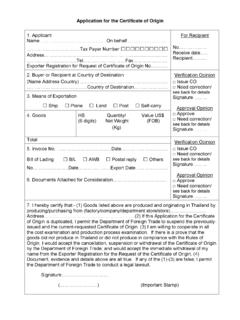Transcription of EU-Japan Economic Partnership agreement ... - …
1 EU-Japan EPA The agreement in Principle 6 July 2017. This document summarises the negotiating results of the Economic Partnership agreement between the EU and japan at the time of the agreement in principle in July 2017. As the agreement in principle does not correspond to the end of the negotiating process, the description of the results achieved should not be considered as final. Some chapters still need some fine-tuning, while for some others some issues are still open and remain to be settled before the actual finalisation of the negotiations. Any agreement referred to in this text is to be considered ad referendum and should not be taken as being in all cases the definitive position of the EU or japan . This document presents the outcome of negotiations for an agreement in principle, and is sent to Member States and the European Parliament for information, but is not yet confirmed by the Leaders of the EU and japan .
2 Once the agreement in principle will be confirmed by Leaders, this document will be immediately published. This is not a legal text. Index: 1) Tariffs 2) Non-Tariff Measures, NTMs 3) Rules of Origin (RoO). 4) Services 5) Corporate Governance 6) Procurement 7) Intellectual property Rights (IPR). 8) Geographical Indications 9) Competition, Subsidies, State Owned Enterprises (SOEs). 10) Trade Remedies 11) Technical barriers to Trade (TBT). 12) Customs and Trade Facilitation (CTF). 13) State to State Dispute Settlement Mechanism (DSM). 14) SPS. 15) Trade and Sustainable Development 16) SMEs NB: Some chapters of this agreement are still under negotiations. On investment, while some parts such as investment liberalisation were agreed in principle, there is still no agreement on the whole chapter, as the issue of investment dispute resolution remains fully open.
3 The EU has tabled its reformed investment court system on the table in the negotiations with japan . The EU continues to insist that there can be no return to old-style ISDS. Under no conditions can old-style ISDS provisions be included in the agreement . More discussions will be required to arrive at a conclusion on this in the next months. On regulatory cooperation, the EU has tabled an initial proposal but further discussions are still needed. The objective will be to promote voluntary cooperation to improve the quality of regulation through adequate consultation and cooperation mechanisms. The cooperation would not, in any way, affect the right of either the EU or japan to define or regulate their own levels of protection in pursuit of public policy objectives or to provide services of general interest.
4 1. 1) Tariffs- Trade in Goods Market Access japan will liberalise 91% of its imports from the EU at entry into force. At the end of the staging period 99% of its imports from the EU will be liberalised, while the remaining imports (1%) will be partly liberalised through quotas and tariff reductions (in agriculture). In terms of lines, japan fully liberalises 86% of its tariff lines at EIF, going up to 97% after 15 years. The overall level of liberalisation of the EU is set at 99% with 96% of its lines eliminated at EIF. In terms of imports the EU liberalises only 75% at EIF, but rising over 15 years to close to 100%. Tariff lines on automobiles will be fully liberalised in 7 years, car parts varying from EIF to 7 years. The only full exclusions are the mutual exclusion for rice and seaweeds.
5 The disparity in terms of levels of liberalization on both sides is justified by the commitments undertaken under this agreement by japan to eliminate non-tariff barriers to EU exports, notably virtually total alignment on international standards in the automobile sector. Agricultural and processed agricultural goods Around 85% of tariff lines concerning EU agri-food products exported to japan will be allowed to enter duty-free over time, corresponding to 87% of current exports value for agricultural products. Pigmeat is the first agricultural export to japan (2016 trade value: 1,214 million euro). japan applies an articulated import scheme, which includes both an ad valorem duty and a specific including a gate price of 524 yen/kg (= euro).
6 japan will maintain this scheme, but will reduce the tariffs considerably. The ad valorem duty for high value cuts will be phased out over 10 years. The specific duty for low value cuts will be reduced from 482 yen/kg ( euro) to just 50 yen/kg (= 40. cent) within 10 years. The Japanese pig meat sector will be safeguarded during the liberalisation phase, by means of volume based safeguard clauses applying to high value meat (pork prices above 399yen/kg) and low value meat (pork prices < 399yen/kg). Wines and aromatised wines, which are currently subject to a 15% tariff, will be liberalised at entry into force (EIF) as well as most of other alcoholic beverages (except some traditional Japanese drinks such as shochu and sake). This is the EU's second most important agricultural sector for exports to japan after pigmeat.
7 EU exports amounted to 1 billion euro on average in the period 2014-16. This concession (wines liberalised at EIF) has never been granted by japan so far. It will allow wine and spirits EU industry to compete on equal footing with other competitors (in particular Chile) as soon as the agreement enters into force. In addition japan undertook to accelerate the approval of 35 EU additives and processing aids used in wines within 5 years after entry into force, including 20 priority ones at entry into force, or within 2. years after EIF. A dedicated budget is to be allocated by japan to facilitate the process. For cheese and dairy products significant market access improvements were agreed for EU's core export products to japan . The agreement will provide for full liberalisation of tariffs for hard cheeses (eg.)
8 Parmesan, fontina, gouda, cheddar ). Tariffs of up to will be eliminated over 15 years. A. tariff rate quota will grant meaningful access for other cheeses like fresh and processed cheese including mozzarella, blue veined cheese and soft cheeses such as camembert, brie and feta. The tariff rate quota will cover fully EU's current export and will be growing over time in line with the growing cheese consumption in japan . For other dairy products like whey, mineral concentrated whey, whey infant formula, and whey permeate) the agreement provides for a duty free Tariff Rate Quota (TRQ), for whey products with specific protein content tariffs will be reduced by 70%. For Skimmed milk powder (SMP) for feeding . an important export interest for the EU dairy industry - tariffs will be reduced by 95%.
9 In addition a 2. sizeable quota for SMP/butter and condensed milk will give us preferential access besides the existing WTO quota. There will be a considerable improvement of market access conditions for EU's exports for bovine meats including veal. The agreement will foresee a tariff reduction over time (from the initial to 9% with an initial cut bringing the tariff down to ) and a volume based safeguard functioning on a model similar to the one agreed by japan in the TPP. The EU export potential is fully reflected in the size of the safeguard which will disappear in 15 years if not used over four consecutive years. For food and processed agricultural products (PAPs), this agreement will achieve liberalisation of key PAPs such as pasta (in 10 years), chocolates (10 years), pure cocoa powder (EIF), candies (10.)
10 Years), confectionary (10), biscuits (5 to 10 years), starch derivatives (5 to 10 years), egg albumin (EIF), prepared tomato and sauce (5 years), lactose and lactose syrup (EIF), gelatin (EIF to 15 years), etc. Malt and potato starch will get a meaningful duty free TRQ. For other important agricultural products (beside dairy and beef sectors): significant quotas (duty free or with reduced duty) have been agreed, also ensuring meaningful new market access. Rules of Origin have been designed with thresholds on non-originating materials ( the maximum percentage of imported ingredients) which ensure appropriate balance between the interests of EU. agricultural producers and those of the EU food industry and ensuring that tariff concessions can be fully used by EU exporters.
